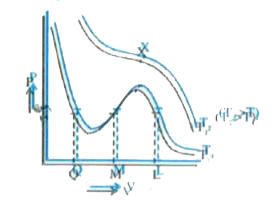PF3 reacts with XeF4 to give PF5
2PF3(g)+XeF4(s)→2PF5(g)+Xe(g)
If 100.0gm of PF3 and 50.0 gm XeF4 react, then which of the following statement is true? Solution in Telugu
XeF4 is the limiting reagent
PF3 is the limiting reagent
1.127 mol of PF5 are produced
0.382 mol of PF5 are produced
The correct Answer is:A, D
Step by step video, text & image solution for PF_(3) reacts with XeF_(4) to give PF_(5) underset((g))(2PF_(3))+underset((s))(XeF_(4))rarrunderset((g))(2PF_(5))+underset((g))(Xe) If 100.0gm of PF_(3) and 50.0 gm XeF_(4) react, then which of the following statement is true? by Chemistry experts to help you in doubts & scoring excellent marks in Class 12 exams.
Updated on:21/07/2023Topper's Solved these Questions
- STOICHIOMETRYBook:AAKASH SERIESChapter:STOICHIOMETRYExercise:ADDITIONAL PRACTICE EXERCISE LEVEL -II (LECTURE SHEET (ADVANCED) LINKED COMPREHENSION TYPE QUESTIONS)
Explore 5 Videos
- STOICHIOMETRYBook:AAKASH SERIESChapter:STOICHIOMETRYExercise:ADDITIONAL PRACTICE EXERCISE LEVEL -II (LECTURE SHEET (ADVANCED) MATRIX MATCHING TYPE QUESTIONS)
Explore 2 Videos
- STOICHIOMETRYBook:AAKASH SERIESChapter:STOICHIOMETRYExercise:ADDITIONAL PRACTICE EXERCISE LEVEL -II (LECTURE SHEET (ADVANCED) (STRAIGHT OBJECTIVE TYPE QUESTIONS)
Explore 10 Videos
- STATES OF MATTER Book:AAKASH SERIESChapter:STATES OF MATTER Exercise:ADDITIONAL PRACTICE EXERCISE -PRACTICE SHEET (ADVANCED) (LINKED COMPREHENSION TYPE QUESTIONS) (PASSAGE- IV)
Explore 2 Videos
- SURFACE CHEMISTRYBook:AAKASH SERIESChapter:SURFACE CHEMISTRYExercise:Objective Excersice - 4 (ASSERTION (A)& REASON (R ) TYPE QUESTION)
Explore 34 Videos
Similar Questions
Iodine titration can be iodemotric or iodimetric depending on using iodine directly or indirectly is an oxidising agent in the redox titration.
a. Iodimetric titration in which a standard iodine solution is used as an oxidant and iodine is directly or indirectly titrated against a reducing agent. For example.
2CuSO4+4KJ→Cu2I2+2K2SO4+I2
b. Iodimetric procedures are used for the datermination of strength of reducing agent such as thiosulphates, sulphites, arsenties adn stanous chloride etc. by titrating them against standard solution of iodine in a burette.
2Na2SO3→2NaI+Na2S4O6
Starch is used as indicator near the end point whilch form blue colour complex with I−3. The blue colour disappeams when there is not more of free I2 .
The volume of KI solutioin used for CuSO4 will be
View SolutionMatch the concentration terms with the factors affecting the concentration.

View SolutionA solid element has specific heat 1Igm−1k−1. If the equivalent weight of the element is 9. Identify the valency and atomic weight of element.
View SolutionAt a particular temperature and pressure for a real gas Van der Waal's equation can be written as:
(P+aV2m)(Vm−b)=RT

where Vm is molar volume of gas. This is cubic equation in the variable Vm and therefore for any single value of P & T there should be 3 values of Vm. Which are shown in graph as Q, M and L.
As temperature is made to increase at a certain higher temperature the three values of Vm becomes identical. The temperature, pressure & molar volume at point X are called Tc, Pc & Vc for real gas. The compressibility factor in terms of Pc, Vc and T is called Zc.
The expression of Van dcr Waal's constant 'a' can be given as
View Solution(A) De-emulsification is a reverse process of emulsion formation
(R ) During de-emulsification , the emulsion breaks to give oil and water.
View SolutionXeF_(2) + PF_(5) rarr (A^(+) B^(-)) XeF_(4) + 5bF_(5) rarr (C^(+) D^(-)) , choose the correct statement about the equations -
View SolutionXeF_(6)+PF_(5) to
View SolutionComplete the following equations : XeF_(4) + H_(2)O to XeF_(2) + PF_(5) to XeF_(6)+NaF to
View SolutionXeF_(2) reacts with PF_(5) to give :
View Solutionनिम्नलिखित स्पीशीजों की संरचना का वर्णन कीजिए-
(a) XeF4 (b) XeO3 (c) PF5
View SolutionComplete the folllowing. XeF_(2)+PF_(5)to
View SolutionComplete the following : XeF2+PF5→
View SolutionFind the number of sp^(3)d hybridised species. {:([XeF_(4)]^(2+),[ClF_(4)]^(+)),([SF_(5)]^(+),[IF_(2)]^(-)),([SiF_(5)]^(-),[XeF_(2)]),([SF_(2)]^(2-),[PF_(2)]^(3-)):}
View SolutionHow does XeF_(2) reacts with PF_(5) ?
View SolutionSbF3 reacts with XeF4andXeF6 to form ionic compounds [XeF+3][SbF+6]and[XeF+5][SbF−6] then molecular shape of [XeF+3] ion and [XeF+5] ion respectively
View Solution

